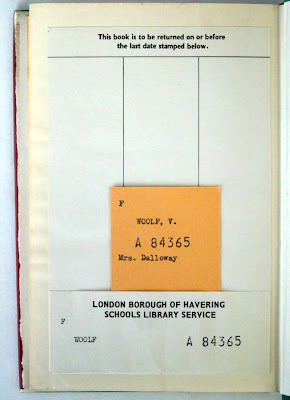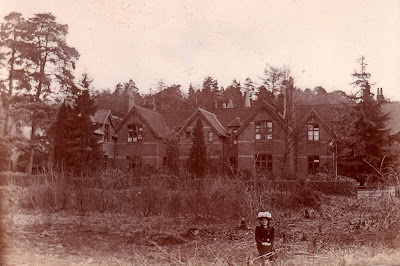 Once, I naïvely assumed that these signs were an official endorsement, awarded by nameless, incorruptible officials -a guarantee of quality. But that's not how it works. A run-of-the-mill farm shop (with the obligatory soft-play area for children) can become a major tourist attraction, whilst a Neolithic burial chamber is unknown to all but a few.
Once, I naïvely assumed that these signs were an official endorsement, awarded by nameless, incorruptible officials -a guarantee of quality. But that's not how it works. A run-of-the-mill farm shop (with the obligatory soft-play area for children) can become a major tourist attraction, whilst a Neolithic burial chamber is unknown to all but a few.But perhaps that's a good thing. Today, I was able to have the second oldest building in mainland Britain all to myself.
Built in the year 654, using bricks and stones from the ruined Roman fort of Othona, the Chapel of St Peter-on-the-Wall was established for the East Saxons. Its founder, St Cedd, had travelled down from Lindisfarne at the request of the local king, Sigebehrt the Good. Like the oldest building in Britain - the Roman "Pharos" lighthouse at Dover - it is largely unknown.
It seems inexplicable that Britain's oldest church only receives a trickle of visitors. Where are the coach parks and gift shops selling Anglo-Saxon shortbread and St Cedd tea towels? But perhaps the reason why St Peter's is so neglected is also the key to why it has survived for 1,356 years.
I can almost see St Peter's from my mother-in-law's bedroom window. Bradwell-on-Sea is only two miles away, on the other side of the Blackwater estuary. But getting there involves a tortuous hour-long journey along minor roads that pass through flat, empty fields and peopleless villages. My journey was only 30 miles, but by the time I arrived I had listened to a whole Vaughan Williams symphony (the 9th) and was halfway through another CD.
I didn't like Bradwell-on-Sea. On the surface, it wasn't that different from other villages: a Norman church and a single street of charming, traditional cottages, augmented by a mixture of cheap, badly designed modern houses. But I didn't like the way the people stopped and stared, pointing at me as I drove past. I had visions of some Wicker Man-style ceremony awaiting me.
Fortunately, St Peter's Chapel isn't actually in Bradwell, but can be found at the end of a long track. I don't know why the car park is so far from the church, but the ten minute walk between the two is like a decompression chamber between the 21st century and the 7th. With each step I became more attuned to my surroundings.
 I thought of all the people across fourteen centuries who had walked along this path, listening to the distant roar of sea and shingle, longing for some respite from the biting cold wind.
I thought of all the people across fourteen centuries who had walked along this path, listening to the distant roar of sea and shingle, longing for some respite from the biting cold wind. Architecturally, St Peter's seems primitive and crude, but in an age in which homes were built out of wood and thatch, this church must have seemed miraculous:
Architecturally, St Peter's seems primitive and crude, but in an age in which homes were built out of wood and thatch, this church must have seemed miraculous:

 When I entered the church, I was immediately struck by the smell of the damp stones and the eerie silence - so quiet that I could hear the ringing in my ears. But as I sat still and listened, I became aware of the sound of the wind, buffeting against the outside walls.
When I entered the church, I was immediately struck by the smell of the damp stones and the eerie silence - so quiet that I could hear the ringing in my ears. But as I sat still and listened, I became aware of the sound of the wind, buffeting against the outside walls.The desolate landscape, the cold wind and the roaring sea reminded me of the Anglo-Saxon poem, The Seafarer . For much of the year, life must have been cold and hard for the people here. St Peter's church offered meaning in a world that, for many, must have been a relentless struggle against nature and ill fortune.
Fæder ure þu þe eart on heofonum, Si þin nama gehalgod, to becume þin rice, gewurþe ðin willa...
 The church appears to have changed very little since the 7th century and although the crucifix, pews, alter and pulpit are all 20th century, they seem to complement rather than detract from the atmosphere of the place.
The church appears to have changed very little since the 7th century and although the crucifix, pews, alter and pulpit are all 20th century, they seem to complement rather than detract from the atmosphere of the place.
 Outside, nettles sway in the wind and the grass gradually turns into marshland:
Outside, nettles sway in the wind and the grass gradually turns into marshland: In East Sussex, there is a dramatic demarcation between land and sea, with towering chalk cliffs and steep shingle ridges. But in this part of Essex, the land just seems to fizzle out, as if someone has lost interest.
In East Sussex, there is a dramatic demarcation between land and sea, with towering chalk cliffs and steep shingle ridges. But in this part of Essex, the land just seems to fizzle out, as if someone has lost interest.I don't know how long I was in the church, but when I left I felt different. It wasn't a religious experience, but I think that being alone in an ancient building can have a profound effect, briefly freeing us from the tyranny of the present. It was either that, or I was feeling weak from having nothing but Special K that morning.
Why is St Peter's chapel generally ignored by the guide books? It may not be the most architecturally stunning building, even by Dark Ages standards, but this is the second oldest complete building in England. Surely it's more exciting than the Honiton Lace Museum?
Part of the answer lies in St Peter's remoteness. Situated at the end of the Dengie peninsula - a landscape of bleak, empty fields, with a coastline of marshland and mudflats - Bradwell feels like a long way from anywhere (this is probably why a nuclear power station was built there in the 1950s). The nearest large town is only 15 miles away, but it might as well be 50.
As I drove out of the car park, I looked in the rear view mirror and saw a large wooden structure. It looked familiar, but I didn't know why. Then I remembered:









































